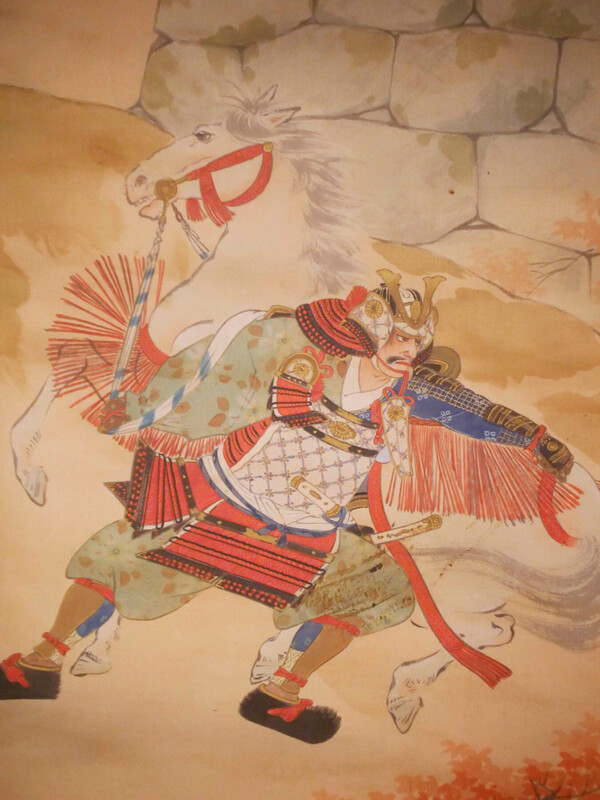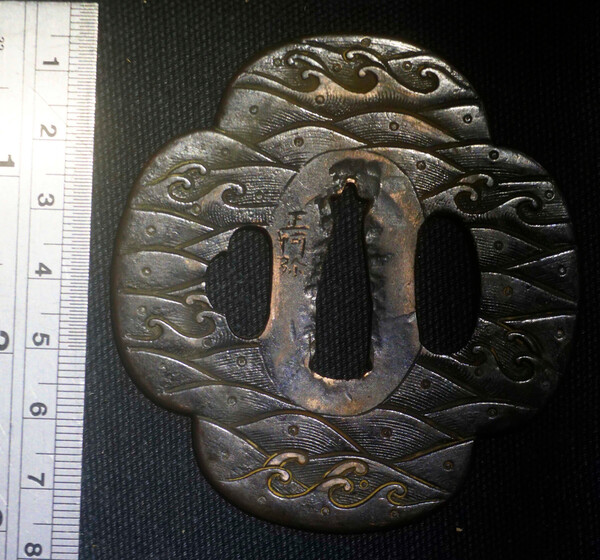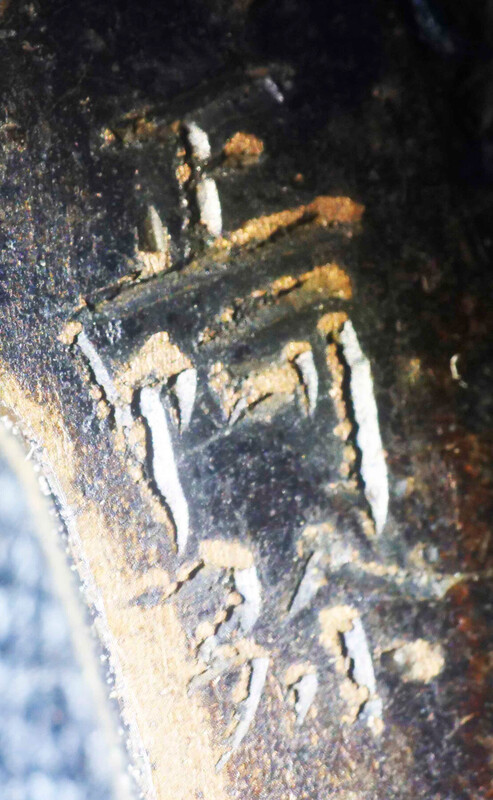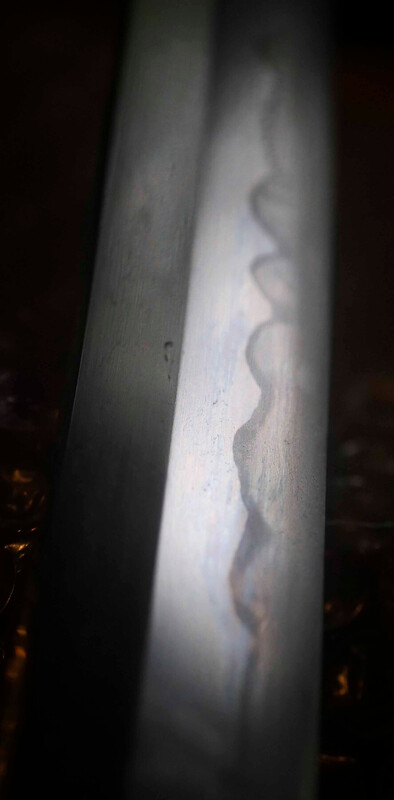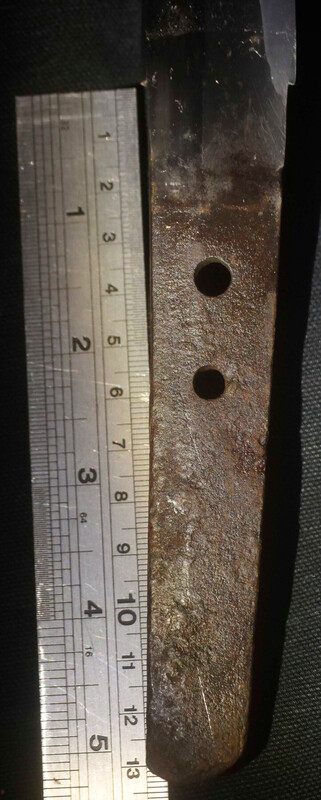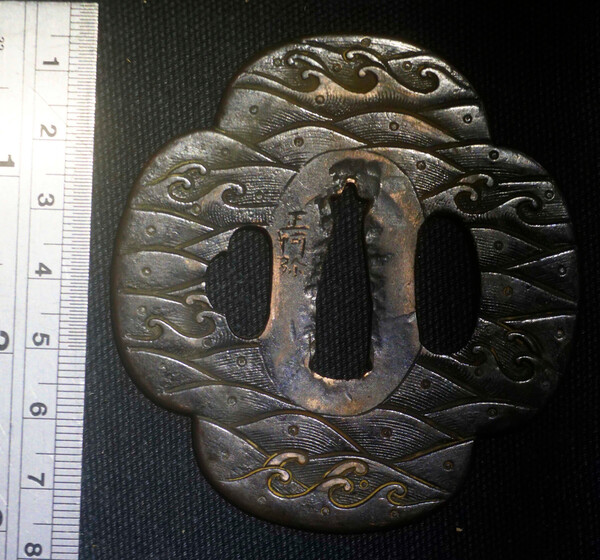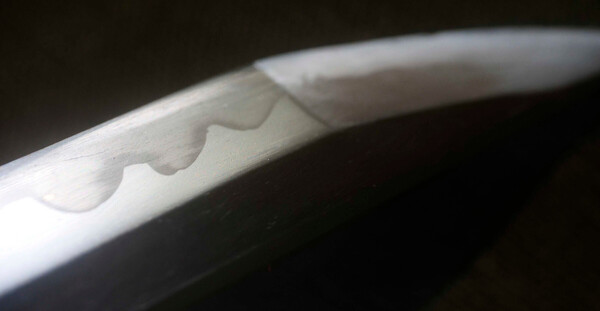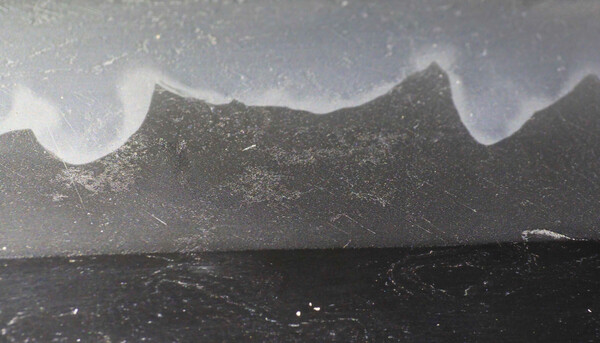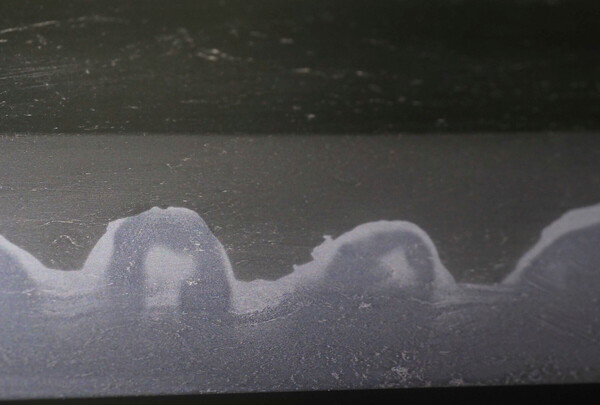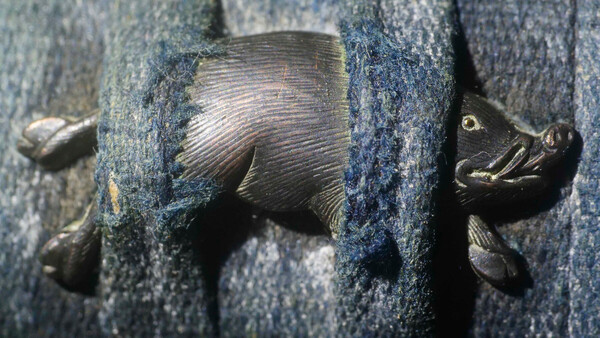
Robert S
Gold Tier-
Posts
172 -
Joined
-
Last visited
-
Days Won
1
Everything posted by Robert S
-
How on earth they mistook a mantis for a lobster... Any chance this was compiled during oktoberfest? Robert S
-
-
Juyo Koto by the numbers. (Sort of)
Robert S replied to Mushin's topic in General Nihonto Related Discussion
Not to throw too many cats among the pigeons... but I wonder how much of this is also due to familiarity bias - i.e. people have seen many Rai Kunimitsu blades, so when a mumei (or really good gimei) blade comes along which resembles Rai Kunimitsu work it gets attributed to them... even though it may be by an unknown smith working with similar techniques and/or imitating their style. In general in the arts attribution without solid provenance remains a (highly educated and carefully founded) guess, and the context for those guesses changes over time, as is for example the case with attributions of western paintings to specific artists. Robert S -
I definitely don't think that it has to have been consciously made as art in order to be appreciated as art. In fact, that would go against the whole "tea" aesthetic in Japanese art, which includes, and really, is based on, the appreciation of simply made utilitarian objects as art. To me, art is about focus and investment, and not necessarily about intent. With the rare truly artists, you don't witness their creation, but rather their witness of their creation. For instance, with truly great musicians (as versus just technically incredible musicians), I experience that I am listening to their listening, not their playing (Hendrix, for example). Likewise with swordsmiths, if they have truly "become" their craft, I am seeing the result of their observation and constant re-invention of their own process. Japanese craftspeople tend to move in that direction by the simple intensity of their apprenticeship - they've learned by watching, not by systematic instruction - which probably explains why so much Japanese "craft" rises to the level of art. Robert S
-
I saw that one too - the hamon is outrageous. It's a lot of $ for tokubetsu hozon, but certainly not your run of the mill work.
-
I tend to agree with Alex: Buy something cheaper as a learning process. Even better, in my opinion, buy something very cheap, without papers, in decent but not great condition, but which appeals to you aestheticly. You can then have enormous fund with a) the learning process, as you try to figure out what you have, b) getting it polished, if necessary, and C) sending if for shinsa if you think it merits it (and discovering how wrong (or right) you were in your initial guesses and subsequent learning). My first post on this site about my first sword was full of an embarrassing number of errors, but the much more knowledgeable folks on this sight got me headed in a better direction. Like you, I could afford a much higher priced sword, but it would come without the mystery and learning process (both about swords and about polishing, shinsa, etc.). I may have bought something which turns out to have little merit at the end of the day, but for the $1,100 I paid i have already gotten several times that price in learning and enjoyment, so I figure the real price of the sword at this point is zero... and I still love it. One approach... Robert S.
-
Speaking as the now "proud" owner of an acid etched blade :-), awaiting repolishing, that doesn't look like acid etching to me... but it is a distinctly odd hamon, although I don't have the expertise to say why.
-
This is the central image of a scroll painting that was purchased by my family in Japan in the late 1920's or 30's. It was pretty obviously painted around that time, significantly influenced by western art, and was probably aimed at the tourist market. I find it interesting though that he was portrayed carrying a tachi, plus a companion blade in the edge-up position.
-
I agree with Jean Collin. I don't see any signs of casting on the tsuba. Nice one! Robert S
-
Yves: Do you think that Daisho would typically have had matching menuki? I'd sort of wonder of they might not have had different but related menuki sometimes, to sort of extend the symbolism - like symbols for perseverance and for strength.
-
Rust/ staining on sword.
Robert S replied to Mick taylor's topic in General Nihonto Related Discussion
Brendan: That's crazy. What's going on with Border Control? Shortage of staff/funding? I brought a sword into Canada from Japan recently, and it took less than a day to make it through customs... and they declined to charge me duty or tax... although I suspect that may be an error, so I'm not mentioning it :-) -
Keeping my hands strictly in my pockets - there are some lovely things here. Inspiration for things to make, though :-)
-
Mauro: I thought ko-kinko as well. It's odd that whoever put the shoami mei on it used the alternate form of the last character. Mysteries! Dale: That's great - really helps understand that shape! Robert
-
Having done some casting, my first instinct is that this is cast - looks like they didn't bother chasing and polishing down in the voids, where-as if it was carved all the surfaces would start with the same treatment. However, that could be just corrosion fooling me.
-
I had previously shared a photo of this tsuba in a post about the wakizashi I recently acquired, but I have some specific questions about it It's a copper alloy (shakudo) tsuba with a Shoami mei. Does the shape of the Nakago ana indicate that this was previously mounted on a sword worn edge down, or is there another reason for this shape? Does this work look like a Shoami piece? Is it possible that if it was converted from edge down mounting to edge up mounting, it was signed by the Shoami artisan that did the conversion? Any thoughts on the form of the "mi" character? I have seen this alternate form of the simplified character on a couple of tsuba attributed to the Iyo branch of Shoami. Thanks for all thoughts and wisdom! Robert S
-
Thanks again everyone for the guidance and thoughts - really helps me learning what I am seeing - it's so easy to get way off track when you know as little as I do :-) . I think I'll consider whether to get it a proper polish - I know it's probably not monetarily worth it, but it feels like it would be rewarding to see what that would bring out. I did wonder whether those nioi/ni islands in the ha would be diagnostic of a particular maker or school?
-
Rivkin: Thanks so much - super helpful. Does the extremely slender/light/tapered shape also suggest Mino to you? So many of the wakizashi that I see from that period seem to be much more robust.
-
I think I see what Christian S and Franco D mean about not sashikomi, now that I've been pointed in that direction!
-
Thanks so much for the really useful feedback already! Like I said, total beginner here. Anything you can tell me about what you are seeing that leads you to certain conclusions would be greatly appreciated for my learning!
-
I’m looking for thoughts from this expert company on a mumei wakizashi that I just purchased from Japan. I am a complete beginner in nihonto, although I have some limited background in smithing, casting, etc I picked this nihonto because it looked like it was in “working class” (if such a thing can be said about nihonto) koshirae, in the tachi style. Sugata: Nagasa – 54cm Motohaba - 29mm, Sakihaba 18mm Motgasane - 5mm, Sakigasane 3.5mm Sori - 10mm Mune – Iori-mune Kissaki is chu-kissaki, but on the o-kissaki side, with a fukura on the scarce side of medium. Blade is in a decent sashikomi polish – better than expected, but with some scratches and defects This blade appears o-suriage (tensho-suriage). Although the polish makes it look like the hamon ends in the normal way, beneath the polish it appears to continue into the nakago. If there was a mei, it was lost. Tsuba is copper, in a simple wave pattern, with the mei on the blade side. Tsuba appears to have originally been fitted to a tachi, with the nakago-ana later inverted. Tsuba mei is “Shoami”, but with an unusual variant of the simplified character for “mi”. I can’t tell if the hitsu-ana were original, or added later. Without the signature I would have called it probably ko-kinko… I wonder if it is possible that it was signed by the smith doing the conversion? Tsuba fit is quite loose. Saya appears to be wrapped with a course fabric and lacquered with possibly a vermillion lacquer, and has Ishizuki and Kashiwaba. There is no provision for a kuzuka or kogai. Fittings are all workmanlike rather than fancy. Menuki is a nice running boar (in shakudo?) As to the blade, here my extreme lack of experience means that I may be way off track. My thoughts: Jigane & Jihada Itame mixed with mokume, only visible in some areas beneath the sashikomi polish. Distinct ha-hada. No evidence of Chikei. Hamon & Boshi Hamon is gunome-midare, tending towards koshi no hiraita. Fairly bright nioiguchi, with nie in both the ha and ji, and islands of nioi/nie in the ha. One area of distinct midari utsuri, but otherwise absent or not visible. There are dark lines cutting through the nioi/nie – part of the forging structure, but not distinct kinsugi. Kissaki boshi is Notare-komi, tending toward Kaen. When and where? My wild guesses as to date/area: If this is the lower half to two thirds of a tachi, as I guess, the slender form and taper feels Heian, but the hamon more early to mid Muromachi (Oei Bizen?). I’m guessing that the sword broke, and the length remaining was only sufficient for a wakizashi length blade. Possibly the saya was also shortened, keeping the original tachi fittings. These fittings could also be bakamatsu, but the style and simplicity makes me think not, and the O-suriage appears to have occurred a long time ago, given nakago condition. I look forward to your thoughts Robert S
-
I think it's great that you've pulled the trigger, given that this is the blade that was calling to you. Far better a blade like that than a highly papered blade which feels blah to you. This is significantly about aesthetics, after all :-) Robert S
-
This is a very useful thread on several issues. Thanks for keeping it up! Robert S




